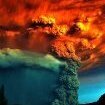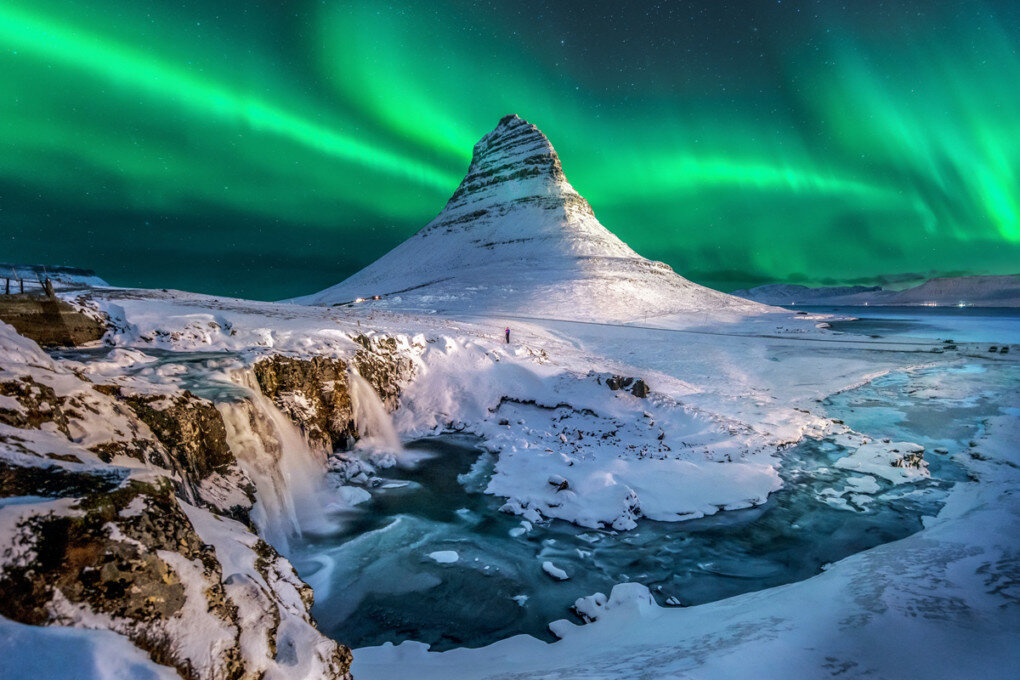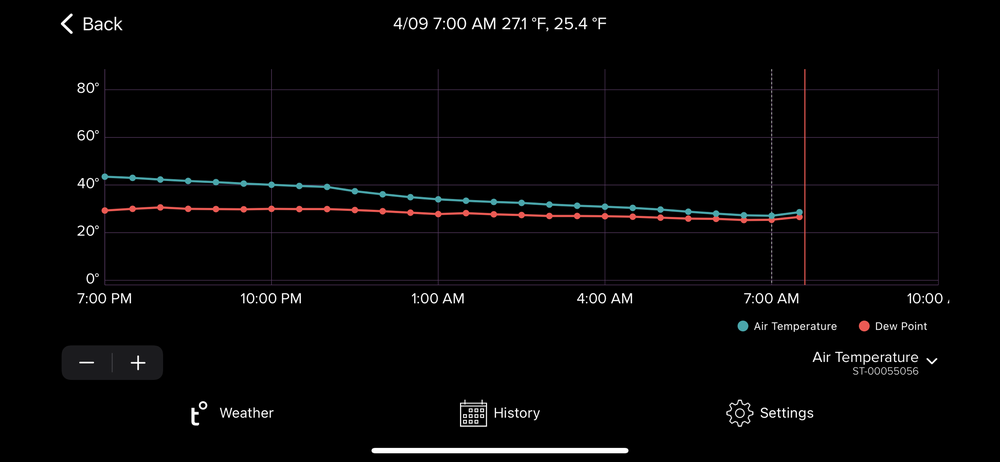-
Posts
1,513 -
Joined
-
Last visited
Content Type
Profiles
Blogs
Forums
American Weather
Media Demo
Store
Gallery
Everything posted by Volcanic Winter
-
Wow, BlueWave. Don’t think I would’ve expected that at all. The temp profile right now is more what I consider enjoyable for April.
-
Yup, I had next to no rain at all. We seemed to suck on virga for a bit and things got damp, but no measurable rain fell. Definitely feels like we’re starting to dry out around here.
-
Copying a post I made on Reddit regarding the magnitude of the Shiveluch eruption: Apparently a professor stated it released about .2 Tg (teragrams) of SO2, which is about half of the Soufriere VEI4 from 2020-21. Update: Apparently this figure is being revised up to .36 Tg, which is a substantial increase. I'll try to get a source and update this comment later. Just from that alone, this could be a high VEI 3 to low end / borderline VEI 4. That's just a guestimate based off the SO2 release which may be inaccurate for various reasons (could be especially gas laden or even the opposite). Also going off another recent eruption, Calbuco in 2015, which released .295 Tg and had a volume of .27 km3 which is a VEI 4. —— So IMO we’re looking at a VEI 4 considering the revised sulfur figure. Pretty large event all things considered, though small to impart any climate impact which was also true of Soufriere which had a similar sulfur release to the revised figure. Perhaps we’ll get another large eruption this year? Keeping eyes on a few systems, though there’s never a guarantee any particular one will go big. Just for a point of comparison, Pinatubo 1991 released ~20 Tg of sulfur. Laki in the late 18th century was over 100, though not all of that massive quantity reached the stratosphere as the eruption was predominantly effusive though it did have explosive components, and I theorize a lot of gas was still lofted high enough to hit the climate system riding on co-ignimbrite plumes and intense thermal updrafts from the insane heat of the massive eruption. Still, much of that insane sulfur flux stayed trapped in the troposphere and ultimately killed a large quantity of people in the UK as it migrated, and it killed something like ~20% of Iceland’s population along with an enormous quantity of livestock. It was a truly terrible weather event that’s worth reading about.
-
Unfortunately this is probably too small to cause a climate impact by itself, but I want to caution I haven’t really had a chance to deep dive the info on this event today while at work. My thinking, very preliminarily, is at max a VEI 4 which is an order of magnitude below the sort of eruptions that impart climate impacts favorable for our purposes. We’ll see though! Looks pretty sizable! But it’s crazy how much explosive eruptions scale upwards, and duration is equally important to overall plume width and height. Actually Hunga Tonga was the most intense eruption since the VEI 7 Hatepe eruption from the Taupo supervolcano in New Zealand, circa ~200CE. Despite “only” being a borderline high end 5 to 6, the moment to moment intensity of the short hour long main eruption sequence was similar to a VEI 7! Most people don’t realize this. Had HTHH lasted longer, it would’ve been a substantially larger eruption. It was very much like a large natural nuke detonation and was over and done extremely quickly.
-
Mauna Loa and Kilauea are linked deep underground as they “share” the Hawaiian Hotspot. They’re also very spatially close to one another as Kilauea is sort of a very hot wart on the flank of Mauna Loa, and there are theories that suggest the activity of one impacts the activity of the other. There have been instances of seismic activity at one registering a change at the other, without being familiar with the article something along these lines is probably what they’re talking about. But assuming mainstream news it’s likely an exaggerated interpretation meant to sound interesting to the general audience.
-
Shiveluch just produced a spectacular sub-plinian eruption caused by the collapse or partial collapse of its growing lava dome (which has been its current mode of activity for quite a while). https://www.reddit.com/r/Volcanoes/comments/12ieudx/shiveluch_volcanic_eruption_11042023_kamchatka/ https://www.volcanodiscovery.com/shiveluch/news/208903/Shiveluch-volcano-Kamchatka-massive-eruption-with-huge-ash-cloud-up-to-16-km-heavy-ash-rain-darkened.html The second link goes to VolcanoDiscovery where you can see multiple reports on the eruptive sequence. This type of behavior is what caused the VEI 4 Soufriere eruption two years ago in the Caribbean. Definitely a spectacular, voluminous blast. It could be up to VEI 4 level, but I’ll have to see more footage and analysis, especially of the duration of the event. Typically lava dome collapse eruptions are temporally brief events (often, but not always). However, if it was only a partial collapse that caused this eruption, more could follow.
-
26 here, a degree colder than last night. TR station further east is at 30 so I’m four under them.
-
A nice, cool night at my sister’s place on the water: We’re at exact opposite ends of TR.
-
-
35 down here in the pine barrens. Chilly. Edit: Down to 28 for a low at 6a.
-
I want the diametric opposite next winter. Park a big fat trough over us for 120 days and keep those waves comin’. If we’re 34 and rain all winter I riot.
-
Nov had my lowest low temperature that wasn’t part of the one or two day cold shots in Dec and Feb, at 19. That’s actually rather impressive it best 99% of the winter.
-
It’s still bizarre to me how we had a supercell EF3 recently; it’s not common for proper rotating discrete supercells to form in this area. They require an enormous amount of energy in the form of absolutely perfect conditions (which aren’t common here) for them to maintain and perpetuate, and it’s why most of our tornadoes are relatively weak spinups along a QLCS. It’s one thing to get embedded tornadoes inside linear storm complexes (and those can certainly be strong and damaging), but it’s going to be really wild if we start to see an uptick in discrete supercells producing tornadoes here.
-

Occasional Thoughts on Climate Change
Volcanic Winter replied to donsutherland1's topic in Climate Change
Even the Siberian Traps took thousands of years to cause the major hothouse excursion of the Permian Mass Extinction via volcanic CO2. -
I’m annoyed I didn’t appreciate 09-15 for what they were. Just had too much going on at that time. I’m really hoping for a major, “old school” northeast winter soon because I’ll savor every damn day of it. And if that’s it for a while, it’ll make the rest easier for me to swallow. If I didn’t catch a huge break 1/29 last year and get such a classic storm here I’d probably be bouncing off the walls right now. That took enough of the sting out of this winter for me to just be mostly apathetic.
-
Never to see its like again. Kidding, I think. Really hope we can still get anomalous events that occur in the opposite mode to “any and everything related to warmth.” My fear is that such events nowadays won’t surpass what would’ve been seen as commonplace a hundred years ago. No joke it’s really hard for me to deal with. You hear about people with SAD in the winter whereas I’m like a giddy school girl Dec through March. My SAD kicks in now during the spring-summer-fall never ending hellscape.
-
Yup, my home tempest is at 53 at the moment. To my immediate south and west the temperature escalated quickly. I’ve noticed this year a few times where even at my location at the southern extent of CNJ has avoided the warmth to the SW in the Delmarva area.
-
It’s heavily debated. I will say it’s an interesting theory, I definitely lean toward the traditional thinking but I enjoyed reading the papers on it. Check out the wiki for “Younger Dryas Impact Hypothesis.” Check references at bottom for the papers on it. I can link later for you if you like. It’s been a little bit since I reviewed the info on it, but I believe the most compelling stuff was increased platinum found in strata dating to 10,000 years ago in various locations across north and South America, which the authors argue indicates a relatively large (think it was 1ish km) asteroid exploding Tunguska style. It’s definitely much simpler to explain the YD as an AMOC shutdown from the melting Laurentide, and some of this evidence for a supposed impact is of course heavily contested.
-
Just kill me now. I want to be encased in a solid block of ice and shipped off to Nunavut.
-
Younger Dryas. Discounting the theories about a large airburst meteor strike causing the sharp return to near stadial conditions, the traditional thinking is that it was caused by the melting of the Laurentide ice sheet shutting down the AMOC (snapping it into its “slow” state, apparently the AMOC has two stable configurations, the one we’re in now and and “off” or “slow” state). When the forcing of the meltwater dissipated, temperatures sharply rebounded. We’re seeing something similar now with the melting of Greenland slowing the AMOC and the melting of Antarctica slowing the SMOC (new papers came out in 2023 about this, highly suggest reading). Will it be enough to terminate the overall thermohaline circulation into its other configuration? Continued slowing is a guarantee, which already implies destabilization. Edit: This is one of the newer studies: Paper It’s believed the slowing SMOC by 2050 will cause something like an additional ~20% slowdown in the AMOC.
-
Wasn’t there a supposed high end hurricane that landfalled on south NJ in 1821? And then I thought I read something about finding sedimentary evidence for a potentially Cat 4 hitting in the 15th century, though this would seem a bit more speculative depending on how they determined its intensity Probably had to be extremely fast moving storms with not much chance to weaken.
-
Laguna Del Maule in South America is having major volcano-tectonic unrest at the moment and had its alert level increased. For those unaware, this is a major rhyolitic volcanic system with the capability for extraordinarily large silicic eruptions (yes, the kind that cause unambiguous downward forcing of surface temperatures). It also has the distinction of showing some of the highest rates of uplift (at times probably the most) of any rhyolitic volcanic system that we know of (rhyolite is highly evolved and generally the most explosive form of magma). It’s a system that could plausibly erupt in the near future as it has been undergoing consistent uplift for many years (basically accumulating magma at depth pushing up the surface). Most likely result would be a VEI 4-5 level explosive event, but the chance for a 6-7 level caldera collapse eruption exists albeit with less likelihood as those are rare by default even in large systems like Laguna Del Maule. This is the one to watch right now. Nothing is considered imminent but the current seismic crisis could very well be the prelude to an eruptive episode, the question is when. Could be soon, could be several decades. Depends on how sustained it is at such intensity and if things continue to ramp up. Would be a nice counter to Hunga Tonga mucking things up with its water vapor, that’s for sure.
-
I have to mention @psuhoffman because he demonstrated with clear data on the M/A forum how in the 20th century we snowed frequently in the previous -PDO cycle with a predominantly negative PNA. In order to accomplish that we needed -NAO blocking (basically a favorable Atlantic) that would overcome a hostile Pacific and produce snow, and it did. Granted there will be some differences between the DC area where he focuses and NYC, of course. But the general theme was pretty clear that the PNA wasn’t historically a death knell for east coast winters, and it’s concerning that it’s beginning to be. I think logically a chunk of that is temperature climo, we’re warming and missing borderline events that may have been mild to moderate events in colder decades. That’s just my thoughts on it, not his. It’s probably more complicated. But I found his presentations and analyses compelling and grounded in observable fact. It’s more the conclusions that are open to interpretation. Hopefully it’s just “bad luck” worsened by decadal warming.
-
Btw my January minimum temp was 22.4, while my March minimum was 23. Dec and Feb 7 and 8 respectively (which were of course one offs). Had a colder minimum in Nov than Jan, 19 degrees. Just a ghastly winter, I’m still befuddled by it. If next winter isn’t better I’m not moving to the north part of the forum, I’m moving to Thule. Satellites will catch pics of me with my legs dangling off the edge of a glacier.
-
Hit 26 for a low, impressive.






